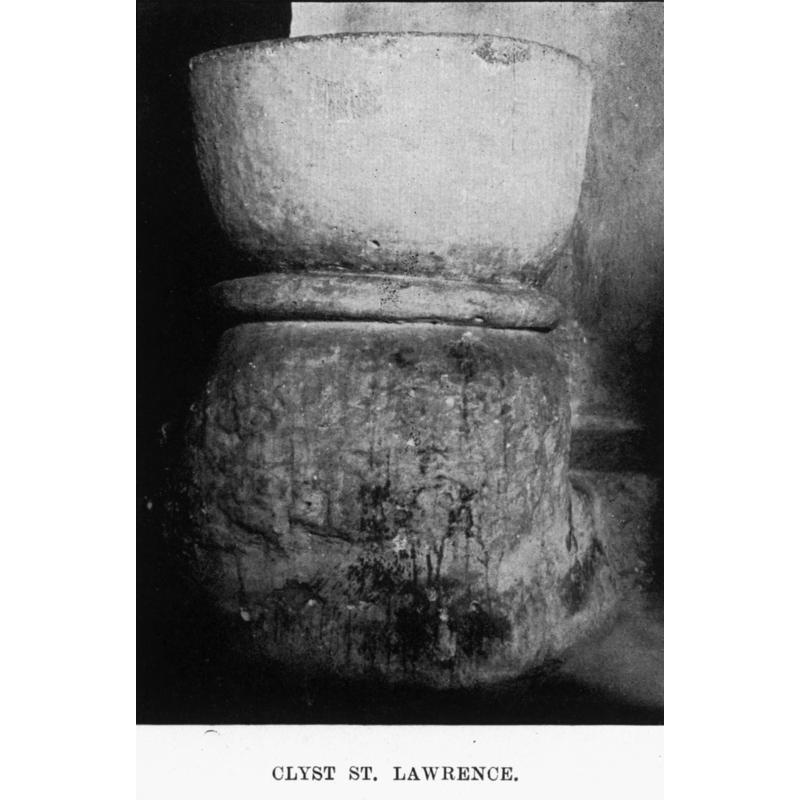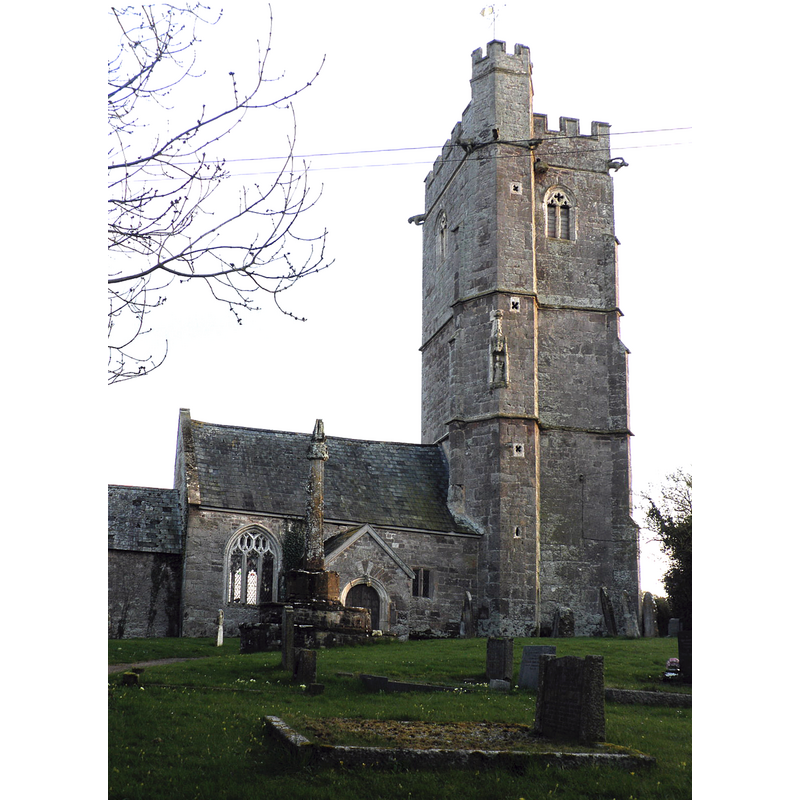Clyst St. Lawrence / Clyst Saint Lawrence / Clist St. Lawrence

Image copyright © [in the public domain]
PD
Results: 3 records
design element - motifs - roll moulding
view of church exterior in context - north view
INFORMATION
FontID: 10378CLY
Object Type: Baptismal Font1
Church/Chapel: Parish Church of St. Lawrence
Church Patron Saints: St. Lawrence [aka Laurence]
Church Location: Clyst St Lawrence, Cullompton EX15 2NJ, United Kingdom -- Tel.: +44 1404 822104
Country Name: England
Location: Devon, South West
Directions to Site: Located off (E) the B3181 and the M5, about 15 km NE of Exeter
Ecclesiastic Region: Diocese of Exeter
Historical Region: Hundred of Cliston
Font Location in Church: Inside the church
Date: ca. 1200?
Century and Period: 12th - 13th century, Medieval
Church Notes: late-Norman church re-built 15thC
Font Notes:
Click to view
There is an entry for Clyst [St Lawrence] in the Domesday survey [https://opendomesday.org/place/ST0200/clyst-st-lawrence/] [accesed 4 August 2021] but it mentions neither priest nor church in it. Mentioned in Stabb (1908-1916) as a font of plain design covered in whitewash. Described and illustrated in Clarke (1914) as the second instance of a unornamented girdled-font in Devon [cf. Index entry for West Putford for the first example]. The baptismal font has a tub-shaped basin the only decoration on which is a thick roll moulding that Clarke takes as an indication for a 13th-century dating: "This conclusion, founded on the moulding, is supported first by the plain treatment of the bowl, characteristic of that time, and secondly by the material; for it does not appear that granite was used for fonts, at all events in Devon, until quite the close of the Norman period." Clarke further mentions the roughly shaped base, as well as the lead-lining of the basin well and the presence of "a very good ogee cover". Noted in Pevsner (1952): "Font. Norman of the plainest, crudest." Noted in Hoskin (1954): "plain granite font, c. 1200 in date."The entry for this church in Historic England [Listing NGR: SY0265799976] notes: "Parish church. Probably Norman origins (the font is Norman), rebuilt in the C15 [...] The Norman font is made from a single block of volcanic stone; it is an unornamental girdled font of the simplest kind."
COORDINATES
Church Latitude & Longitude DMS: 50° 47' 28.0 "N, 3° 22' 56.0" W
UTM: 30U 473287 5626763
MEDIUM AND MEASUREMENTS
Material: stone, granite
Number of Pieces: two
Font Shape: tub-shaped (mounted)
Basin Interior Shape: round
Basin Exterior Shape: round
Drainage Notes: lead lining
Rim Thickness: 8 cm [calculated]
Diameter (inside rim): 53.75 cm*
Diameter (includes rim): 70 cm*
Basin Depth: 25 cm*
Basin Total Height: 37.5 cm*
Height of Base: 63.75 cm*
Font Height (less Plinth): 98.25 cm*
Notes on Measurements: *[measurements given in inches in Clarke (1914: 436)]
LID INFORMATION
Date: Ogee
Material: wood
REFERENCES
Clarke, Kate M., "The baptismal fonts of Devon -- Part II", 46, Report and Transactions of the Devonshire Association for the Advancement of Science, Literature and Art, 1914, pp. 428-435; p. 435, 436 and ill. on p. opp. p. 434
Hoskins, William George, Devon, London: Collins, 1954
Pevsner, Nikolaus, South Devon, Harmondsworth: Penguin Books, 1952
Stabb, John, Some old Devon churches, their roods, pulpits, fonts, etc., London: Simkin, [et al.], 1908-1916
